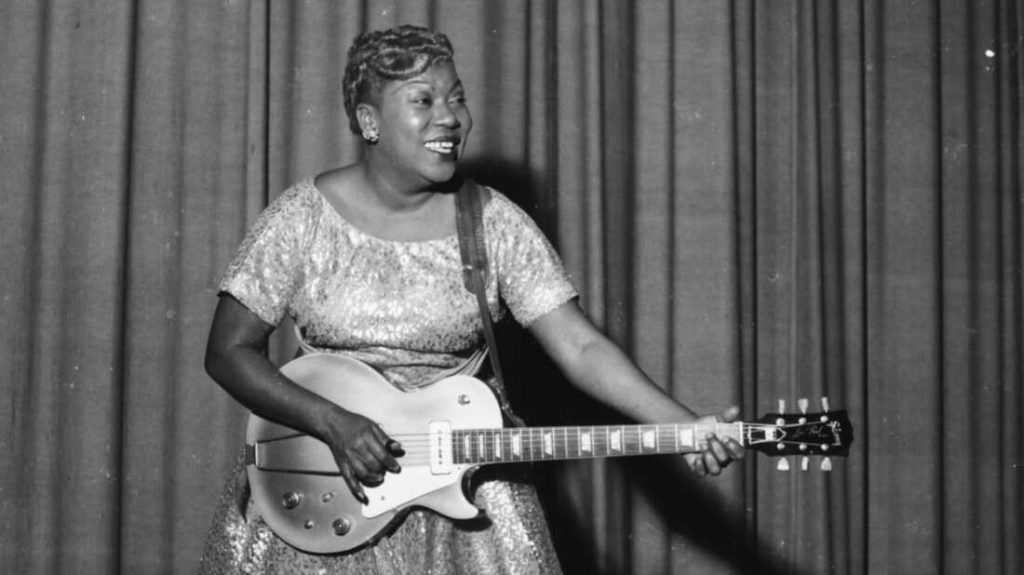She started it all!
Before Chuck Berry or Little Richard, two men considered pioneers of Rock and Roll, there was Sister Rosetta Tharpe, the godmother of the musical genre. She was born Rosetta Nubin in Arkansas to parents Willis Atkins and Katie Bell, NPR reports. Growing up with a religious background, Tharpe began playing the guitar when she was just four years old. By the age of 6, she was joining her mother on the road, performing with a group of church singers across the South. Tharpe and her mother moved to Chicago in the 1920s, continuing to perform as an act. It was during that time that Tharpe also began experimenting with her signature sound, molding gospel music with Delta blues and New Orleans jazz.
By the 1930s, Tharpe had begun making a name for herself, people drawn to her distinctive voice and her musical innovation. They’d never seen a woman guitarist who played around with both gospel and secular themes! While her music was met with controversy, Tharpe kept innovating until she got it right and in 1938, she joined New York’s popular Cotton Club Revue at the age of 23. Soon after, she released her first big singles, “Rock Me,” “My Man and I,” That’s All,” and “Lonesome Road,” all featuring her signature gospel and rock fusion.
Not only was Tharpe’s presence rare, but her content was as well. On top of the gospel notes, she sang songs of love and sexuality, her distinct blues guitar notes mixing with the range of her strong voice, effectively shifting the tone of popular music. While she performed with major artists like Duke Ellington, Tharpe was not immune to the racism and sexism of America. While traveling with groups like the Lucky Millinder Orchestra, a swing band, and the all-white male group, the Jordanaires, Tharpe expanded her audience, but she still ate at segregated restaurants and slept on the bus most times to avoid segregated hotels.
Still, she persevered, her music gaining traction internationally. Tharpe found a new fan base among Black soldiers during World War II and continued producing music that resonated with listeners. She released “Strange Things Happening Everyday” with Decca Records after the war, a nod to the state of affairs. The song was the first gospel song to cross over into the Top 10 R&B charts and became what’s considered one of the first-ever rock ‘n’ roll records.
By the time she was 30, Tharpe was a superstar! She’d survived two marriages and became open about her sexuality among industry peers, dating both men and women. Tharpe eventually met her partner, Marie Knight, the two teaming up for the song “Up Above My Head,” touring as a duo and managing their own business affairs, a revolutionary act for two queer Black women during the late 1940s. By 1950, the two women split and Tharpe eventually married her manager, Russell Morrison. The two had their wedding at a baseball stadium in Washington, D.C. and more than 20,000 paying customers attended. After the nuptials, a concert was recorded that Tharpe subsequently released as an album.
As the rock ‘n’ roll scene shifted with more white men taking over, Tharpe took her music abroad, traveling around Europe in 1957 and continuing for more than a decade. Her last known recording took place in Copenhagen in 1970, and Tharpe passed away just 3 years later in Philadelphia.
While history too often reflects the patriarchal lineage of musical genres, women like Tharpe are forgotten, and the credited pioneers forget to inform the public of who informed their musical leanings. It is important to never forget the contributions of sister Tharpe and ensure her legacy is never forgotten as she paved a road for artists like Berry, Aretha Franklin, and more. In 2018, more than 4 decades after her death, Tharpe’s name came up again, this time as an inductee to the Rock ‘N’ Roll Hall of Fame. The same institution that many of her contemporaries and disciples had already been a part of. Today, Tharpe is finally receiving her flowers, and we plan to continue giving them to her.
Because of Sister Rosetta Tharpe, we can!
Meet Sister Rosetta Tharpe, the godmother of Rock ‘N’ Roll. Photo Courtesy of Gilles Petard/Redferns

